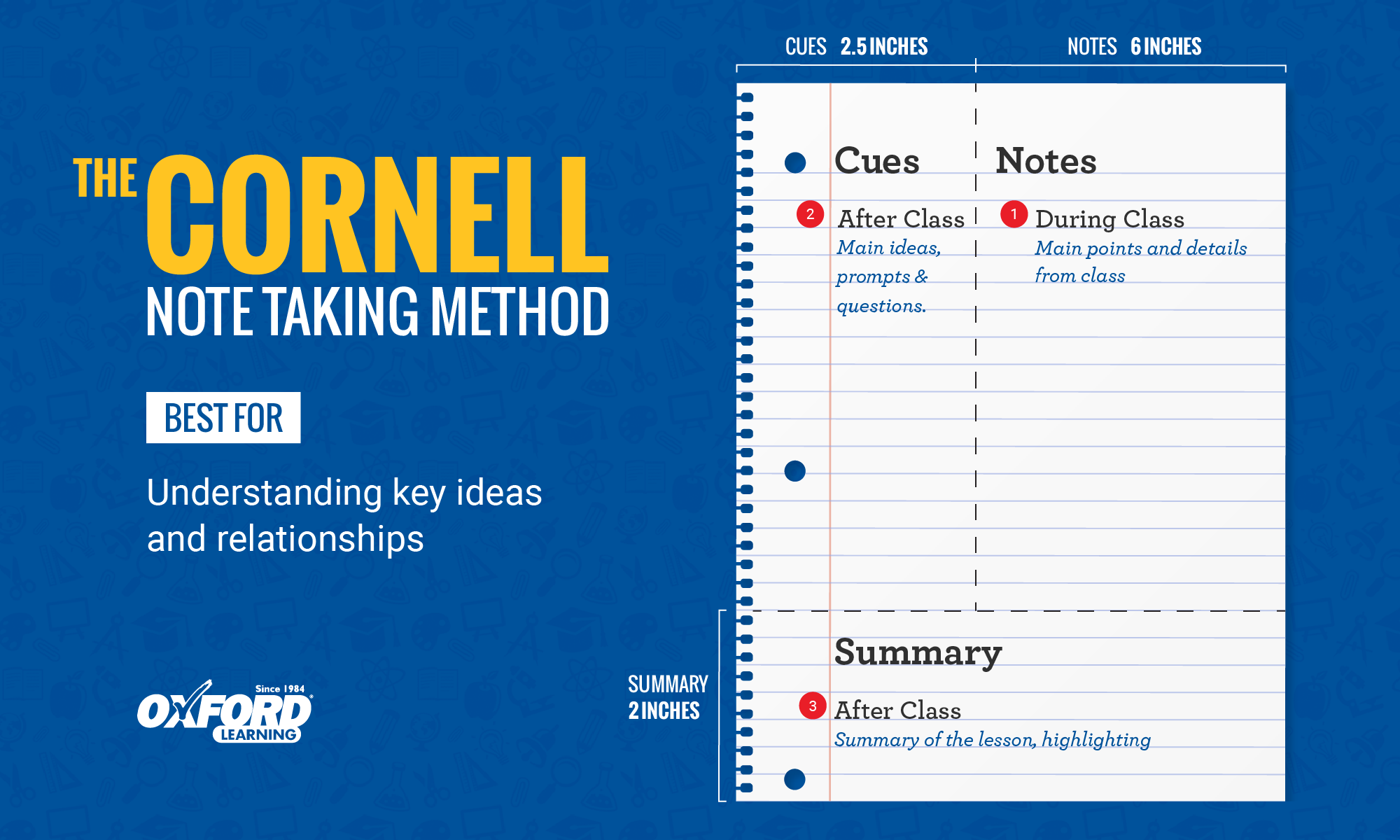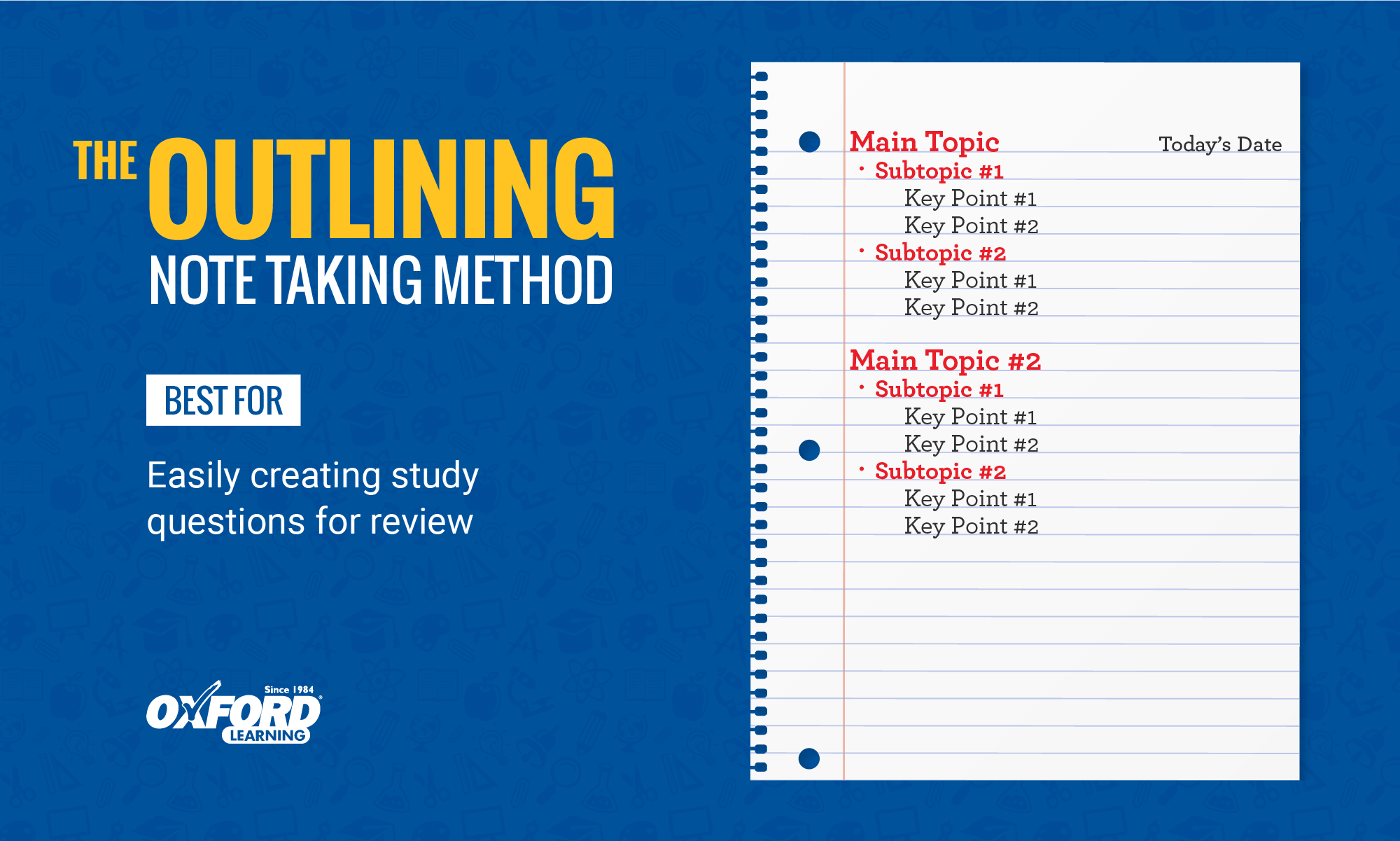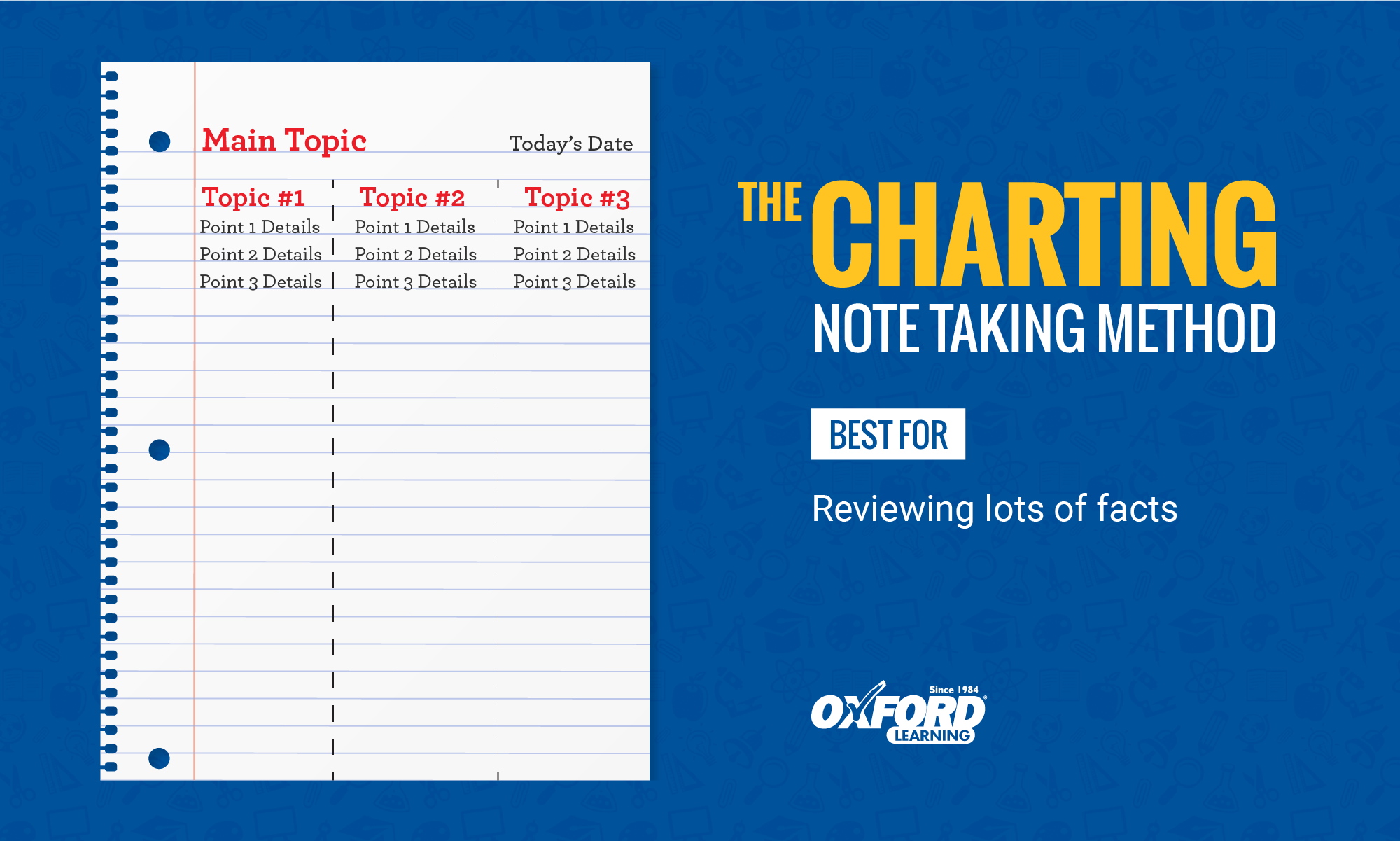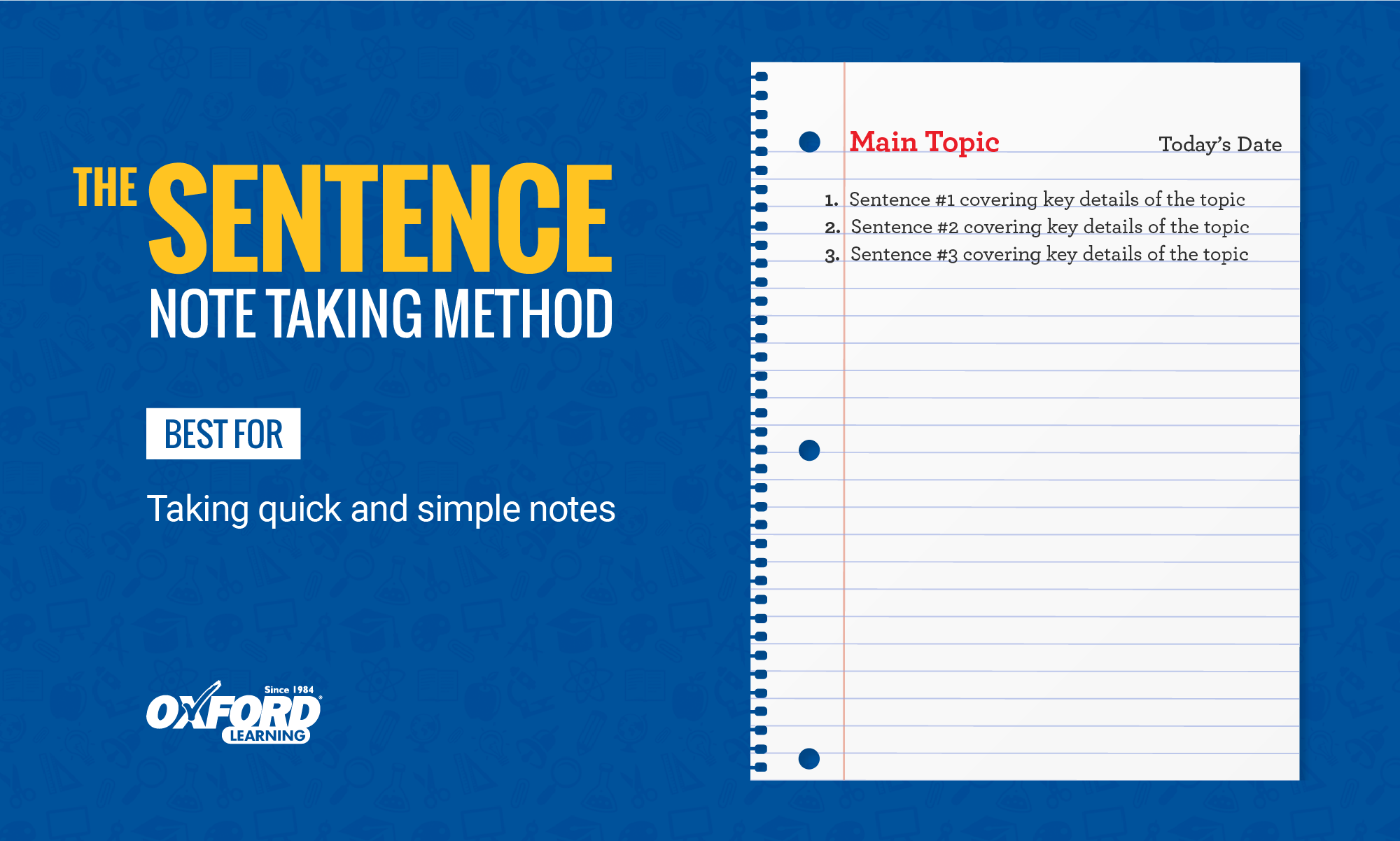How To Take Study Notes: 5 Effective Note Taking Methods

If your in-class notes are messy, unorganized, and unclear at first glance, you’re not going to get much use out of them. This has nothing to do with how neat your handwriting is — it’s all about how your notes are structured.
One of the most effective ways to remember (and understand) what you are learning in class is to take effective notes in the classroom.
Why Are Effective Note Taking Skills Important?
Better notes will help you remember concepts, develop meaningful learning skills, and gain a better understanding of a topic. Effective notes will even lead to less stress when test time comes around!
Learning how to take better study notes in class helps improve recall and understanding of what you are learning because it:
- Ensures you are actively listening to what the teacher is saying
- Requires you to think about what you are writing
- Helps you make connections between topics
- Serves as quality review material for after class
Using different note taking strategies is important, especially as you progress through high school and transition to college or university. There are several note taking techniques you can use to start taking better notes in class.
Start taking better study notes
Get more out of your study sessions with the complete study toolkit
including note taking templates, tips, and more.
Try these 5 methods to find the best note taking method for you!
The Cornell Method
The Cornell note taking method helps organize class notes into easily digestible summaries. This method is effective because the main points, details, study cues, and summary are all written in one place.
Advantages:
- Notes are neatly organized, summarized, and easy to review
- Allows you to pull out major ideas and concepts
What Does it look like?
The paper is divided into 3 sections: a 2.5” margin to the left, a 2” summary section on the bottom, and a main 6” in-class note section.
- Use the main notes section to take notes during class.
- Use the cues section to review your notes. After class, write down things you’ll need to remember and a prompt for each. You can also use this section for vocabulary words and study questions.
- In the summary segment at the bottom, write a summary of your notes. This is where you will highlight the main points.
The Mapping Method
The Mapping note taking method is a more visual way to organize your class notes. This technique is useful when learning about relationships between topics.
Advantages:
- Useful for visual learners who struggle with studying from notes.
- Helps you remember and connect relationships between topics.
What Does it look like?
The page is organized by topic. The main topics branch out into subtopics with detailed information about each.
How Do You Use It?
- While in class, begin the map with the main topic.
- Branching off the main topic, write a heading for each of the subtopics.
- Write any important notes underneath each subtopic.
- Continue the pattern.
The Outlining Method
The Outlining note taking method uses headings and bullet points to organize topics. This method is most useful when learning about topics that include a lot of detail.
Advantages:
- Allows notes to be neatly organized.
- It is easy to see the relationship between topics and subtopics.
- It is easy to turn points into study questions.
What Does it look like?
Each section starts with a heading of the main topic. Each subtopic and supporting fact is written underneath the proper heading.
How Do You Use It?
- During a lesson, begin your notes with a single bullet point and write the main topic.
- Place the first subtopic below and indented slightly to the right.
- List any details below your heading and slightly to the right.
The Charting Method
Charting note taking method uses columns to organize information. This method is useful for lessons that cover a lot of facts or relationships between topics.
Advantages:
- Facts are organized and easy to review.
- Highlights key pieces of information for each topic.
What Does it look like?
The page is divided into columns labeled by category. The details of each category are filled out in the rows below.
How Do You Use It?
- When information about a category is mentioned, jot it down underneath the proper column.
- When the next topic begins move down one row and begin again.
The Sentence Method
The Sentence note taking method is simply writing down each topic as a jot note sentence. This method works well for fast paced lessons where a lot of information is being covered.
Advantages:
- Jotting main points helps you determine which information is important and which is not.
- You are able to cover a lot of details and information quickly.
- Notes are simplified for study and review.
What Does it look like?
Each line on the page is a new and separate topic. To organize your notes even more, you can use headings for each main topic.
How Do You Use It?
- Write down important information the teacher has emphasized. This can be in sentence form or point form.
- Start a new sentence or point for each new detail.
- Use headings to organize points by main topics.
Better Grades Start With Better Notes
Taking organized and thoughtful notes can help improve your understanding and recall of what you have learned in class. Try these methods of note taking in your next classes and see which one works best for you!
Check out our video for more tips on how to boost note-taking confidence.
To learn other ways to make school a breeze, visit the resource section or learn how Oxford Learning’s tutoring programs can help you build skills to become a better learner.








